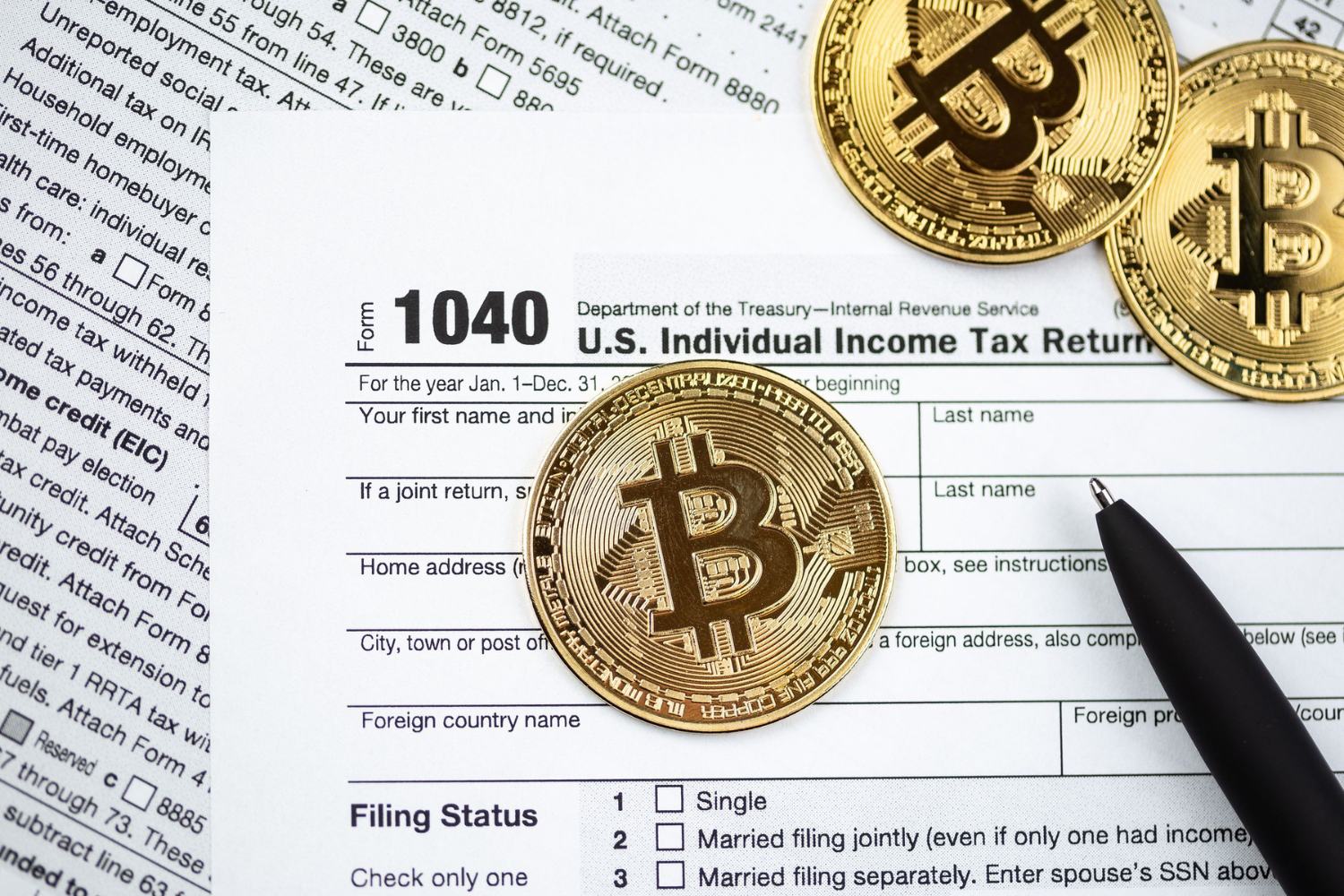Key Terms
In order to fully understand and navigate the world of fair lending laws, it is important to familiarize yourself with some key terms. These terms are essential in comprehending the scope and purpose of these laws and their impact on lenders and borrowers alike. Let’s take a closer look at the key terms associated with fair lending laws:
- Discrimination: Any act that treats individuals or groups unfavorably based on certain characteristics, such as race, sex, religion, national origin, disability, or familial status.
- Protected Classes: Individuals or groups of people who are protected from discrimination under fair lending laws. These include race, color, religion, national origin, sex, disability, and familial status.
- Redlining: A practice used by some lenders to deny or limit loans to individuals based on their residential location, which is often determined by demographic factors.
- Steering: Directing or guiding borrowers towards or away from certain loan products based on their membership in a protected class.
- Fair Credit Reporting Act (FCRA): A federal law that regulates the collection, dissemination, and use of consumer credit information, ensuring fair treatment and accuracy of credit reports.
- Equal Credit Opportunity Act (ECOA): A federal law that prohibits lenders from discriminating against credit applicants based on characteristics such as race, color, religion, national origin, sex, marital status, age, or receipt of public assistance.
- Fair Housing Act (FHA): A federal law that prohibits discrimination in housing transactions based on race, color, religion, sex, disability, familial status, or national origin.
- Community Reinvestment Act (CRA): A federal law that encourages financial institutions to meet the credit needs of the communities in which they operate, including low- and moderate-income neighborhoods.
- Home Mortgage Disclosure Act (HMDA): A federal law that requires certain lenders to collect and report data on mortgage loan applications, helping to identify potential discriminatory lending practices.
By understanding and familiarizing yourself with these key terms, you will be better equipped to navigate the complexities of fair lending laws and ensure compliance with their provisions. An awareness of these terms will help foster fair and inclusive lending practices while protecting the rights of borrowers in the process.
Introduction
Fair lending laws play a crucial role in promoting equal access to credit and preventing discrimination in lending practices. These laws are designed to protect individuals from being denied credit or subjected to unfair treatment based on characteristics such as race, sex, religion, national origin, disability, or familial status. By ensuring fairness and inclusivity in lending, these laws contribute to a more equitable society.
The purpose of this article is to provide an overview of fair lending laws and their significance in the lending industry. We will explore key legislation that governs fair lending practices, such as the Equal Credit Opportunity Act (ECOA), the Fair Housing Act (FHA), the Community Reinvestment Act (CRA), the Home Mortgage Disclosure Act (HMDA), and the Fair Credit Reporting Act (FCRA).
Understanding these laws is essential for lenders, borrowers, and other stakeholders involved in the lending process. By adhering to these laws, lenders can mitigate the risk of legal repercussions and reputational damage, while borrowers can have confidence that they will be treated fairly and have equal opportunities to secure credit.
Throughout this article, we will delve into the key components of each fair lending law, including its purpose, scope, and specific provisions. We will also discuss common fair lending violations and the potential penalties associated with non-compliance.
Moreover, we will examine recent developments and emerging trends in fair lending, as the regulatory landscape continues to evolve. By staying informed on these developments, lenders can ensure they remain compliant with new regulations and best practices.
Overall, fair lending laws serve as a foundation for promoting equality and fairness in the lending industry. They provide a framework to address and rectify discriminatory practices, ensuring that credit decisions are based on an individual’s creditworthiness rather than irrelevant personal characteristics. By adhering to these laws, lenders can create a more equitable lending environment, fostering trust, and confidence in the financial system for all individuals and communities.
Background on Fair Lending Laws
Fair lending laws have a deep-rooted history in the United States, stemming from a long legacy of discrimination and inequality in lending practices. The origins of fair lending laws can be traced back to the civil rights movement of the 1960s, which aimed to dismantle racial segregation and discrimination in various aspects of society, including housing and lending.
Prior to the enactment of fair lending laws, certain groups faced immense challenges in accessing credit and were often subjected to discriminatory lending practices. Lenders would unfairly deny loans or charge higher interest rates based on an individual’s race, gender, or other protected characteristics. This led to significant disparities in homeownership rates, access to capital, and economic opportunities.
Recognizing the inherent injustice of such practices, legislators took action to ensure equal access to credit for all individuals. This led to the passing of key federal laws, such as the Equal Credit Opportunity Act (ECOA) in 1974 and the Fair Housing Act (FHA) in 1968, among others.
The ECOA prohibits lenders from discriminating against credit applicants based on characteristics such as race, color, religion, national origin, sex, marital status, age, or receipt of public assistance. It applies to all aspects of the lending process, including loan applications, underwriting, and loan servicing.
The FHA, on the other hand, prohibits discrimination in housing-related transactions, including mortgage lending, based on race, color, religion, sex, disability, familial status, or national origin. It aims to ensure equal access to housing and prevent discrimination in the housing market.
In addition to these laws, other significant legislation has been enacted to further safeguard fair lending practices. The Community Reinvestment Act (CRA) was passed in 1977 to encourage financial institutions to meet the credit needs of low- and moderate-income communities and prevent redlining, a discriminatory practice where lenders deny loans or impose harsh terms based on the location of the borrower’s residence.
The Home Mortgage Disclosure Act (HMDA), enacted in 1975, requires lenders to collect and report data on mortgage loan applications, allowing regulators to monitor and address potential discriminatory lending practices. This transparency promotes accountability and helps identify disparities in mortgage lending among different demographic groups.
Furthermore, the Fair Credit Reporting Act (FCRA), first enacted in 1970 and amended multiple times since, regulates the collection, accuracy, and use of consumer credit information. It ensures that credit reporting agencies and lenders handle individuals’ credit information fairly and accurately, protecting consumers from unfair treatment and allowing them to rectify any inaccuracies in their credit reports.
These fair lending laws have made significant strides in promoting equal access to credit and combating discriminatory lending practices. However, challenges and disparities still persist, highlighting the ongoing importance of rigorous enforcement, education, and continued efforts to address and rectify any instances of discrimination.
The Equal Credit Opportunity Act (ECOA)
The Equal Credit Opportunity Act (ECOA), enacted in 1974, is a federal law designed to ensure that all individuals have equal access to credit without discrimination based on certain protected characteristics. The ECOA applies to consumer credit, including loans for personal, family, or household purposes.
Under the ECOA, lenders are prohibited from discriminating against credit applicants based on race, color, religion, national origin, sex, marital status, age, or receipt of public assistance. The law applies to all aspects of the lending process, from the initial application to loan approval and servicing.
One of the key requirements of the ECOA is that lenders must provide applicants with a written notice of their rights under the Act. This includes the right to be treated fairly and without discrimination in all credit transactions. The notice must be provided within 30 days of receiving an application or before the extension of credit, whichever is earlier.
The ECOA also addresses specific prohibited practices to prevent discrimination. For example, creditors are prohibited from considering an applicant’s race, gender, or other protected characteristics as a factor in determining creditworthiness. They must base credit decisions on the applicant’s credit history, income, debts, and other relevant factors.
Additionally, the ECOA prohibits lenders from requiring certain personal information, such as information about an applicant’s spouse, unless the spouse is also applying for credit or the applicant resides in a community property state.
Lenders are also required to notify applicants of the reasons for credit denial if an application is rejected. The notice must include specific information, such as the principal reasons for the denial and the applicant’s right to request additional information within 60 days.
In cases where discrimination is suspected, the ECOA provides a mechanism for individuals to file complaints with the Consumer Financial Protection Bureau (CFPB) or other relevant regulatory agencies. These agencies have the authority to investigate complaints, enforce the ECOA, and seek remedies for victims of discrimination.
Non-compliance with the ECOA can result in severe penalties, including monetary fines and damages. Violations can also lead to reputational damage and legal consequences for lenders.
The ECOA has played a significant role in promoting fair lending practices and ensuring equal access to credit for all individuals. By prohibiting discrimination and establishing clear guidelines for lenders, the ECOA helps foster a fair and inclusive lending environment where credit decisions are based on objective criteria rather than personal characteristics.
Lenders must maintain strict compliance with the provisions of the ECOA to avoid legal repercussions and to promote an equitable lending landscape for all borrowers.
The Fair Housing Act (FHA)
The Fair Housing Act (FHA) is a federal law enacted in 1968 with the aim of eliminating discrimination in housing-related transactions. The FHA prohibits discrimination in the sale, rental, financing, or advertising of housing based on race, color, religion, sex, disability, familial status, or national origin.
Under the FHA, it is illegal for housing providers, including landlords, sellers, and lenders, to engage in discriminatory practices. Discrimination can take various forms, such as refusing to rent or sell housing, imposing different terms or conditions, providing unequal access to housing facilities, or steering individuals towards or away from certain neighborhoods based on their membership in a protected class.
One of the core principles of the FHA is the concept of “affirmative fair housing marketing.” This requires housing providers to actively promote equal opportunities and ensure that housing options are made available to all individuals, regardless of their protected characteristics.
The FHA also includes provisions to address barriers that may disproportionately affect individuals with disabilities. It requires housing providers to make reasonable accommodations or modifications to policies, practices, or physical structures to facilitate equal access for individuals with disabilities. This may include providing wheelchair ramps, accessible parking spaces, or allowing service animals.
Furthermore, the FHA places obligations on lenders to ensure fair lending practices in the housing market. Lenders are prohibited from discriminating against borrowers based on their protected characteristics when offering mortgages or other housing-related loans. This helps to prevent unfair lending practices that could result in disparities in homeownership rates among different demographic groups.
The Department of Housing and Urban Development (HUD) is responsible for enforcing the FHA and investigating complaints of discrimination. Individuals who believe they have experienced housing discrimination can file a complaint with HUD, which may lead to an investigation, conciliation, or legal action to seek remedies.
Non-compliance with the FHA can result in significant consequences for housing providers, including financial penalties, damages, and injunctive relief. In addition to legal ramifications, violations of the FHA can have a lasting impact on a housing provider’s reputation and credibility.
The Fair Housing Act has played a pivotal role in promoting equal access to housing and combating discrimination in housing-related transactions. By ensuring fair and inclusive housing practices, the FHA contributes to creating diverse and cohesive communities where individuals can live, work, and thrive without facing discriminatory barriers.
Housing providers must adhere to the provisions of the FHA and proactively embrace fair housing principles to foster an inclusive housing market and promote housing equity for all.
The Community Reinvestment Act (CRA)
The Community Reinvestment Act (CRA) is a federal law enacted in 1977 to encourage financial institutions to meet the credit needs of the communities in which they operate, particularly low- and moderate-income neighborhoods. The CRA is intended to prevent redlining, a discriminatory practice where lenders deny loans or provide limited access to credit based on the location of the borrower’s residence.
Under the CRA, regulated financial institutions, including banks and credit unions, are evaluated on their performance in meeting the credit needs of the communities they serve. These institutions are required to demonstrate their commitment to providing fair and equitable access to credit, including mortgage loans, small business loans, and other types of financial services.
The CRA requires financial institutions to maintain records that show their efforts to serve the credit needs of their designated assessment areas. Assessment areas are typically geographic areas that encompass the communities where the institution conducts its business activities.
Regulatory agencies, such as the Office of the Comptroller of the Currency (OCC), the Federal Reserve, and the Federal Deposit Insurance Corporation (FDIC), conduct examinations of financial institutions to assess their compliance with the CRA. These examinations evaluate the institution’s lending, investment, and service activities in the community.
The CRA examination process considers various factors, including the volume and distribution of loans, the institution’s responsiveness to community credit needs, and the development of innovative loan products and services that benefit the community.
Financial institutions are expected to engage in community development activities that support the needs of low- and moderate-income individuals and neighborhoods. These activities may include investments in affordable housing, economic development initiatives, and partnerships with local organizations to promote financial education and homeownership counseling.
The CRA has been instrumental in fostering greater access to credit in underserved communities and promoting economic development. By encouraging financial institutions to invest in these communities, the CRA helps to revitalize neighborhoods, create jobs, and improve the quality of life for residents.
Financial institutions that fail to meet the requirements of the CRA may face consequences, including less favorable regulatory treatment, potential enforcement actions, and negative reputational consequences. Compliance with the CRA is crucial for financial institutions to maintain a positive relationship with regulatory agencies and demonstrate their commitment to meeting the credit needs of local communities.
The Community Reinvestment Act continues to play a vital role in promoting financial inclusivity and equitable access to credit. By encouraging financial institutions to consider the needs of underserved communities, the CRA contributes to building more resilient and prosperous neighborhoods.
The Home Mortgage Disclosure Act (HMDA)
The Home Mortgage Disclosure Act (HMDA) is a federal law enacted in 1975 that requires certain lenders to collect and report data on mortgage loan applications. The main objective of the HMDA is to promote fair lending practices and provide transparency in the mortgage lending process.
Under the HMDA, financial institutions that meet specific criteria, such as size and loan volume, are required to collect and report data on various aspects of mortgage lending, including the race, ethnicity, sex, and income of loan applicants. This data provides valuable insights into lending patterns, helping identify potential disparities and discrimination in mortgage lending practices.
The HMDA requires covered lenders to collect data on both approved and denied mortgage applications, including information such as the loan amount, interest rate, and loan type. This data is then reported to the appropriate regulatory agency, typically the Consumer Financial Protection Bureau (CFPB).
The data collected under the HMDA allows regulators and policymakers to analyze trends and patterns in mortgage lending and identify potential fair lending violations. It helps identify if certain groups are disproportionately denied mortgages or charged higher interest rates based on their protected characteristics.
Regulators use the HMDA data to assess whether lenders are meeting the credit needs of the communities they serve, particularly low- and moderate-income neighborhoods. It serves as a tool for monitoring and enforcing compliance with fair lending laws, such as the Equal Credit Opportunity Act (ECOA) and the Fair Housing Act (FHA).
Furthermore, the HMDA data is made publicly available, allowing the general public, consumer advocacy groups, and researchers to evaluate lending patterns and hold lenders accountable for their practices. This transparency promotes awareness and fosters informed discussions about access to credit and potential fair lending issues.
The HMDA has undergone various amendments and expansions over the years to increase the volume and specificity of data collected. Recent updates to the HMDA regulations have expanded the scope of reporting requirements, including additional data points such as age, credit score, and property value.
Non-compliance with the HMDA can result in significant consequences for lenders, including penalties, fines, and reputational harm. It is crucial for covered lenders to ensure accurate and timely reporting of HMDA data to remain in compliance with the law.
The Home Mortgage Disclosure Act plays a crucial role in promoting fair lending practices and ensuring that all individuals have equal access to mortgage loans. By providing transparency and accountability, the HMDA helps to address potential discriminatory practices and foster a more equitable mortgage lending market.
The Fair Credit Reporting Act (FCRA)
The Fair Credit Reporting Act (FCRA) is a federal law enacted in 1970 to regulate the collection, dissemination, and use of consumer credit information. The FCRA aims to ensure accurate and fair treatment of consumer credit information, protect consumers’ privacy rights, and promote fairness in credit reporting.
Under the FCRA, consumer reporting agencies, also known as credit bureaus, are responsible for collecting and maintaining consumer credit information. These agencies gather data from various sources, such as lenders, creditors, and public records, to create credit reports that summarize individuals’ credit history and payment behavior.
The FCRA grants consumers certain rights and protections regarding their credit information. It requires consumer reporting agencies to provide individuals with free access to their credit reports once every 12 months upon request. Consumers also have the right to dispute any inaccurate or incomplete information in their credit reports and request its correction.
In addition to consumer rights, the FCRA imposes obligations on creditors and lenders who use credit reports in their decision-making process. They must have a permissible purpose to access an individual’s credit report, such as evaluating creditworthiness for a loan application.
Under the FCRA, consumers must be notified if any adverse actions, such as credit denial or unfavorable terms, are taken based on their credit reports. The individual must also receive information on the specific credit reporting agency that provided the report, enabling them to address any potential inaccuracies or errors in their credit history.
The FCRA also restricts who can access consumer credit information. It requires consent from the consumer before employers, landlords, or insurance companies can obtain their credit reports. This provision helps protect individuals’ privacy and prevents unauthorized access to sensitive financial information.
Furthermore, the FCRA sets requirements for the investigation of consumer disputes. Credit reporting agencies must investigate and respond to consumer disputes within a reasonable timeframe. If the information is found to be inaccurate, the agency must correct or remove it from the consumer’s credit report.
Non-compliance with the FCRA can lead to legal consequences for both consumer reporting agencies and creditors. Violations may result in penalties, fines, and even civil lawsuits by affected individuals.
The FCRA has played a vital role in promoting accuracy, fairness, and privacy in consumer credit reporting. By providing individuals with greater control over their credit information and holding consumer reporting agencies and creditors accountable for their practices, the FCRA helps maintain the integrity of the credit reporting system and protect consumers’ rights.
Fair Lending Violations and Penalties
Fair lending violations occur when lenders engage in discriminatory practices that result in unequal treatment of borrowers based on protected characteristics, such as race, gender, religion, national origin, disability, or familial status. These violations undermine the core principles of fair lending laws and can lead to significant penalties for lenders found to be in non-compliance.
There are various types of fair lending violations that can occur in the lending process. Some common examples include:
- Redlining: Refusing to provide loans or offering less favorable terms to individuals based on the location of their residence, often determined by demographics.
- Steering: Directing or guiding borrowers towards or away from certain loan products or neighborhoods based on their protected characteristics.
- Differential treatment: Applying different terms, conditions, or requirements for credit approval based on the borrower’s protected characteristics, such as providing higher interest rates or fees.
- Incomplete or misleading information: Failing to disclose important information to borrowers or providing inaccurate information that impacts their ability to make informed credit decisions.
- Preference for certain loan types: Giving preference to certain loan products or terms based on characteristics unrelated to creditworthiness.
When fair lending violations are identified, regulatory agencies and authorities have the power to enforce penalties and seek remedies. The penalties for fair lending violations can vary depending on the severity and scope of the violation, and may include the following:
- Fines and monetary penalties: Lenders found to be in violation of fair lending laws may be subject to significant fines imposed by regulatory agencies. These fines can vary in amount, depending on the severity and frequency of the violations.
- Compensatory damages: Individuals who have experienced discrimination as a result of fair lending violations may be entitled to receive compensatory damages. This can include reimbursement for economic losses, such as higher interest rates or fees, or non-economic damages, such as emotional distress or harm suffered due to discrimination.
- Injunctive relief: Regulatory agencies may seek injunctive relief to prevent further violations and require lenders to implement corrective measures. This can include changes to policies and procedures, additional training for staff, or oversight by regulatory authorities.
- Enforcement actions: In more severe cases, regulatory agencies may resort to enforcement actions, such as cease and desist orders, consent decrees, or revocation of licenses. These actions can have lasting consequences for lenders, impacting their ability to operate in the lending market.
It is important for lenders to prioritize compliance with fair lending laws to avoid these penalties and legal consequences. Proactive measures, such as implementing robust fair lending policies, conducting regular audits and risk assessments, and providing comprehensive training to staff, can help prevent fair lending violations and ensure adherence to legal requirements.
By maintaining a commitment to fair lending practices, lenders can not only avoid penalties but also contribute to a more inclusive and equitable lending environment that benefits both borrowers and the overall community.
Recent Developments in Fair Lending Laws
Fair lending laws continue to evolve in response to emerging challenges and the need to address ongoing disparities in lending practices. Recent developments in fair lending laws reflect a growing emphasis on enforcement, data transparency, and the promotion of equal access to credit. Here are some notable recent developments:
- Increased focus on disparate impact: Disparate impact refers to policies or practices that have a disproportionately negative impact on individuals in protected classes, even if discrimination is not intentional. Recent interpretations of fair lending laws place greater emphasis on identifying and addressing disparate impact, ensuring that lending practices do not indirectly discriminate against certain groups.
- Expansion of data reporting requirements: In an effort to enhance transparency and detect potential fair lending violations, regulators have expanded data reporting requirements for financial institutions. The recent updates to the Home Mortgage Disclosure Act (HMDA) regulations, for example, include additional data points related to loan terms, applicant information, and property data. This expanded data collection helps regulators better assess lending patterns and identify potential disparities.
- Increased coordination among regulatory agencies: Regulatory agencies, such as the Consumer Financial Protection Bureau (CFPB), the Department of Justice (DOJ), and other stakeholders, have increased collaboration to enforce fair lending laws effectively. This includes sharing information, coordinating investigations, and taking joint actions to address systemic fair lending issues.
- Technology and algorithmic fairness: With the rise of technology and machine learning in credit decision-making, there is a growing need to ensure that algorithms and automated systems used by lenders do not perpetuate or reinforce discriminatory practices. Regulatory agencies have started focusing on algorithmic fairness and potential bias in lending algorithms to ensure equitable outcomes for all borrowers.
- Greater attention to alternative lending models: The growth of alternative lending models, such as online marketplace lending and fintech platforms, has prompted regulators to assess the potential impact on fair lending. Efforts are being made to ensure that these new lending models do not inadvertently result in discriminatory practices or widen existing disparities in access to credit.
- Enhanced enforcement and penalties: Recent years have seen increased enforcement actions and larger fines imposed on lenders found to be in violation of fair lending laws. Regulatory agencies are demonstrating a more assertive approach in holding lenders accountable for discriminatory practices, which serves as a deterrent to non-compliance.
These recent developments in fair lending laws aim to strengthen protections against discrimination, promote greater transparency and accountability, and adapt to the changing landscape of lending practices. Lenders must stay abreast of these developments and take proactive measures to ensure compliance with fair lending laws, including regular review and enhancement of their policies, procedures, and risk management strategies.
By embracing these developments and actively working towards fair lending practices, lenders can contribute to a more inclusive and equitable lending ecosystem that benefits borrowers and promotes economic and social well-being.
Conclusion
Fair lending laws are essential in ensuring equal access to credit and preventing discrimination in lending practices. The Equal Credit Opportunity Act (ECOA), the Fair Housing Act (FHA), the Community Reinvestment Act (CRA), the Home Mortgage Disclosure Act (HMDA), and the Fair Credit Reporting Act (FCRA) collectively provide a comprehensive framework to safeguard against unfair lending practices.
These laws protect individuals from discrimination based on protected characteristics, such as race, gender, religion, national origin, disability, or familial status. They also promote transparency, accountability, and fairness in the lending process, fostering trust and confidence in the financial system.
Recent developments in fair lending laws focus on addressing emerging challenges, enhancing enforcement efforts, and adapting to technological advancements. There is an increased emphasis on identifying and addressing disparate impact, expanding data collection and reporting requirements, and ensuring algorithmic fairness in credit decision-making.
Compliance with fair lending laws is crucial for lenders to avoid penalties, reputational harm, and legal consequences. Lenders must prioritize fair lending practices by implementing proactive measures, such as robust policies, staff training, and regular audits, to ensure adherence to fair lending laws and promote inclusivity in their lending operations.
By embracing the principles of fair lending, lenders can contribute to building a more equitable and accessible lending ecosystem, where credit decisions are based on objective criteria and individuals are not subjected to discrimination based on protected characteristics.
It is equally important for borrowers to be aware of their rights under fair lending laws and to raise concerns if they suspect any form of discrimination or unfair treatment. Reporting violations helps regulators hold accountable those who engage in discriminatory practices and promotes a fair lending environment for all.
Ultimately, fair lending laws are not just legal requirements; they are fundamental to creating a society that values equal opportunity, inclusivity, and economic empowerment. By upholding fair lending principles, financial institutions can be catalysts for positive change, ensuring that credit remains a tool for growth, advancement, and prosperity for all individuals and communities.

























